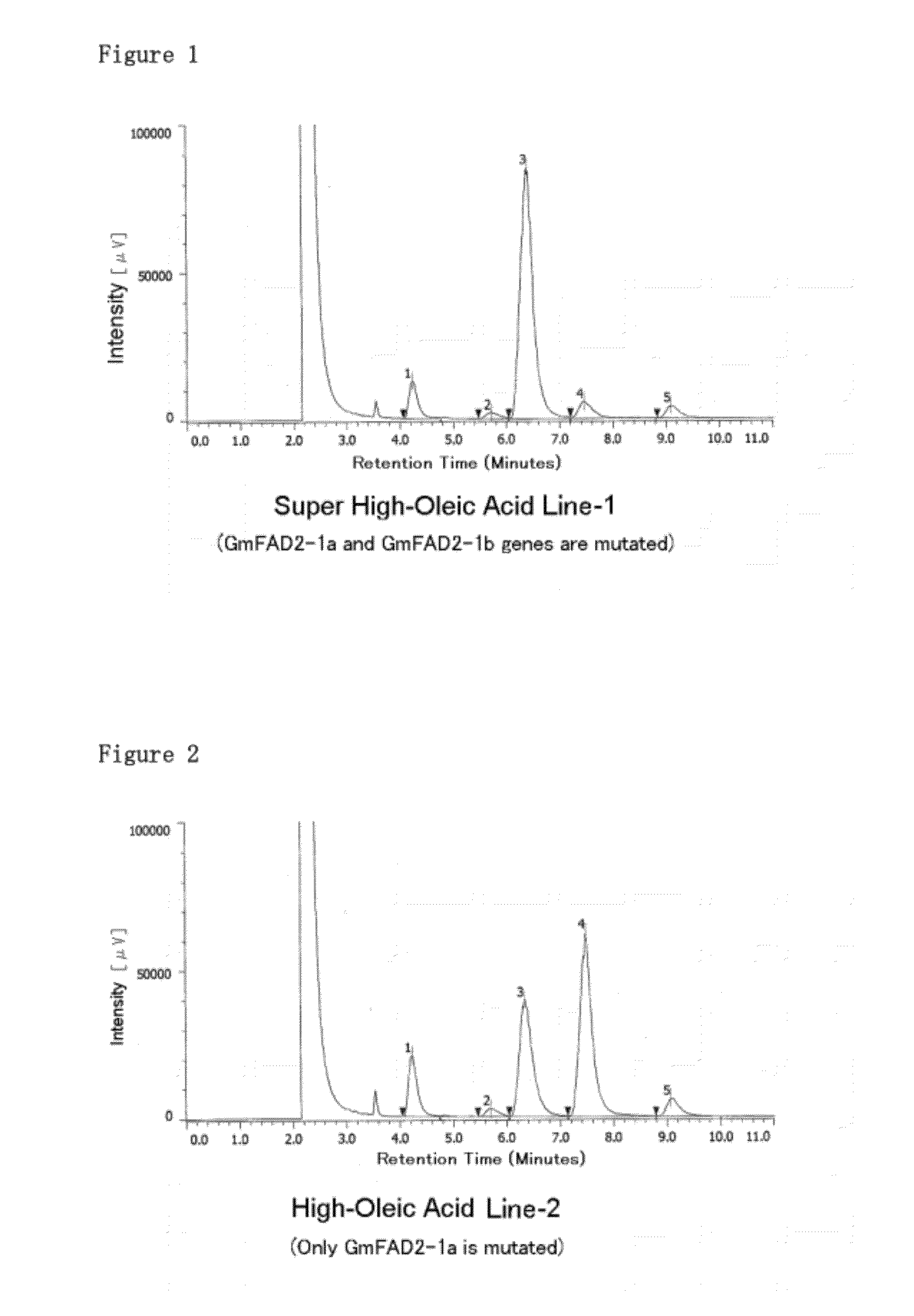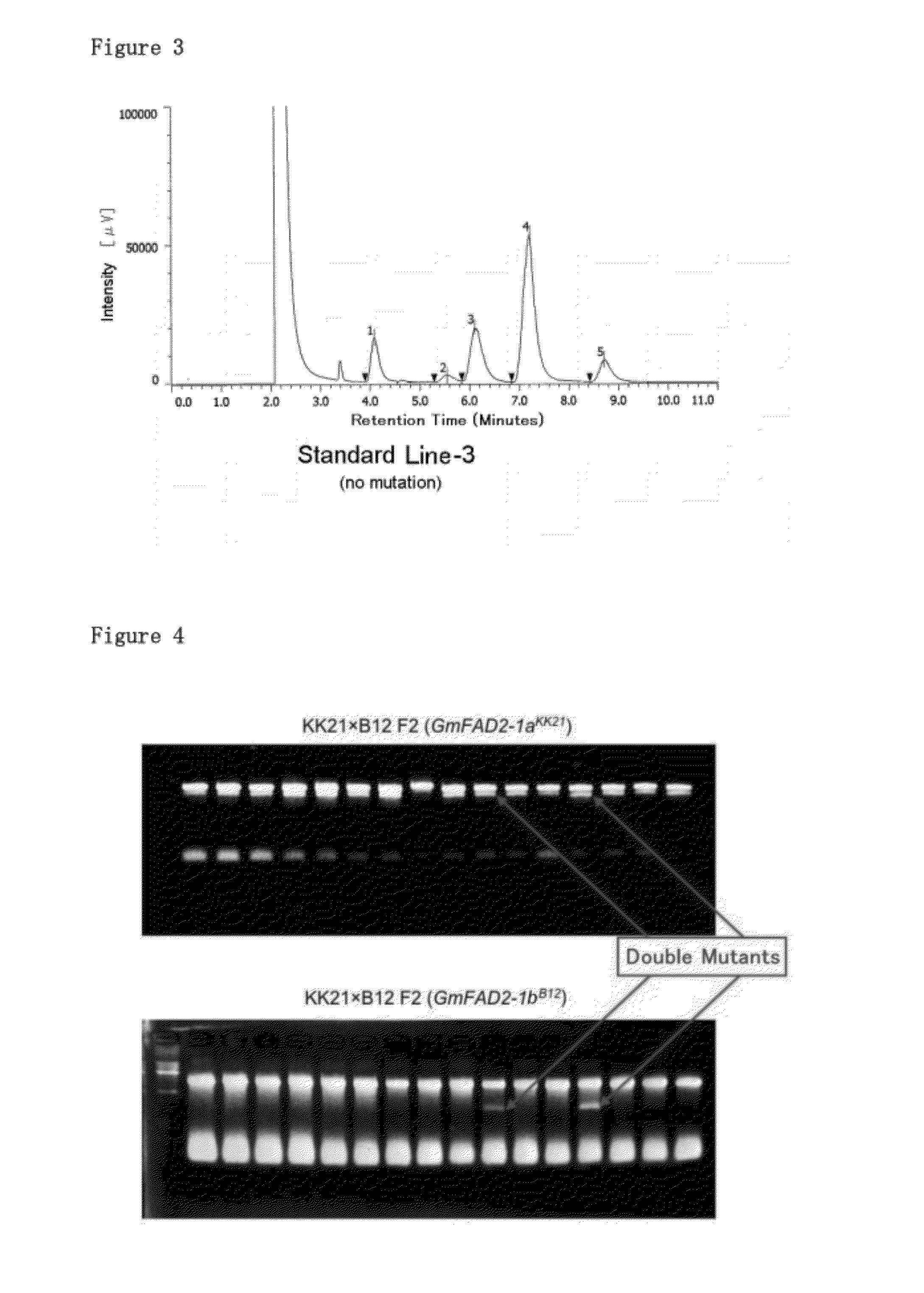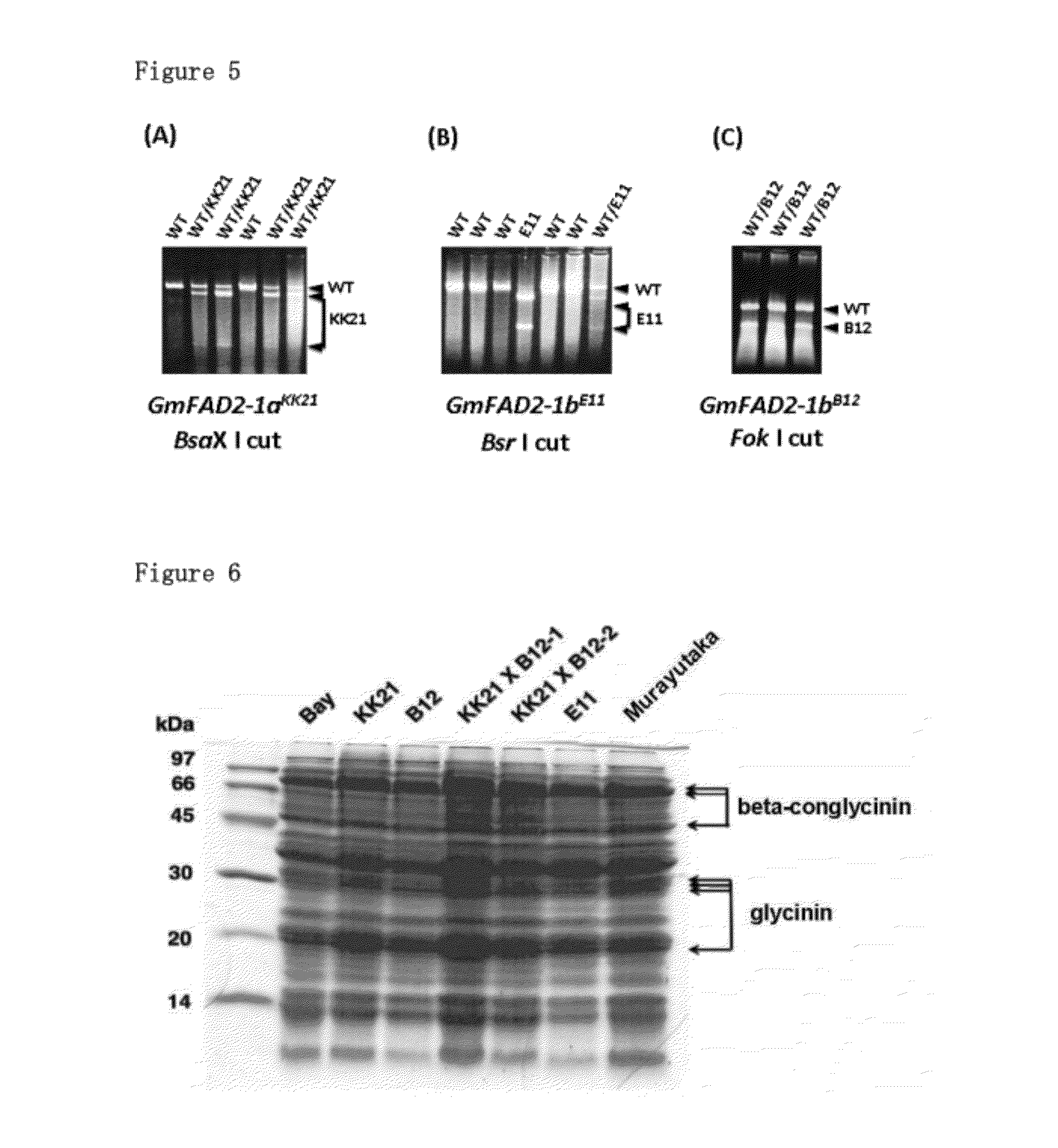Mutation that increases the oleic acid content in soybean oil and responsible gene thereof
a technology of soybean oil and oleic acid, which is applied in the field of soybean seed, can solve the problems of increasing the level of low density lipoprotein cholesterol in the blood, difficult detection of oleic acid, and difficulty in detecting oleic acid, etc., and achieves high content and high oleic acid content. , the effect of high conten
- Summary
- Abstract
- Description
- Claims
- Application Information
AI Technical Summary
Benefits of technology
Problems solved by technology
Method used
Image
Examples
example
Example 1
Plant Material
[0161]The soybean (Glycine max (L.) Merr.) varieties used as material are as below.
[0162](i) Bay;
[0163](ii) OLERICHI50;
[0164](iii) BC3F4 line (variety into which the deletion mutation of the GmFAD2-1a gene was introduced through backcrossing Fukuyutaka with an M23 line)
[0165]The seeds of soybean types (i) to (iii) were immersed in an 0.3% EMS aqueous solution overnight, then the soybean M1 seeds obtained by rinsing for 8 hours were sown in a field, and the M1 plant bodies were cultivated in accordance with the usual method. M2 seed was recovered one from each plant whose fertility had been preserved and stored. The following year, the stored M2 seeds were sown in the field again, and M2 plant bodies were cultivated. At this point in time, each harvested M2 plant was given a different line number, DNA was extracted from the green leaves, the adequately aged and dried M3 seeds were recovered from each plant, and said seeds were stored in a freezer at −20° C.
DNA ...
example 2
Cross-Mating of the GmFAD2-1b Mutant and the GmFAD2-1a Mutant
[0179]The E015B12 line produced in Example 1 was cross-mated with a KK21 line to produce a “KK21×B12” line which has loss of function mutations in both the GmFAD2-1b and GmFAD2-1a genes.
[0180]In brief, in the afternoon of the day before cross-mating, a flower bud of the KK21 line which was expected to bloom on the next day was opened and all stamens were carefully removed so as not to damage the pistil. Then, the flower bud was covered with a bag in order to prevent it from drying out and being contaminated with pollen from the outside. Blooming of the B12 line was confirmed during a period from 9 AM to 11 AM on the day cross-mating was performed in order to harvest pollen from flowers which just bloomed on the same day. The thus harvested pollen was applied to the tip of the pistil of the KK21 flower from which the stamen was removed on the day before. The flower was covered with a bag immediately after completion of the ...
PUM
| Property | Measurement | Unit |
|---|---|---|
| Length | aaaaa | aaaaa |
| Fraction | aaaaa | aaaaa |
| Fraction | aaaaa | aaaaa |
Abstract
Description
Claims
Application Information
 Login to View More
Login to View More - R&D
- Intellectual Property
- Life Sciences
- Materials
- Tech Scout
- Unparalleled Data Quality
- Higher Quality Content
- 60% Fewer Hallucinations
Browse by: Latest US Patents, China's latest patents, Technical Efficacy Thesaurus, Application Domain, Technology Topic, Popular Technical Reports.
© 2025 PatSnap. All rights reserved.Legal|Privacy policy|Modern Slavery Act Transparency Statement|Sitemap|About US| Contact US: help@patsnap.com



